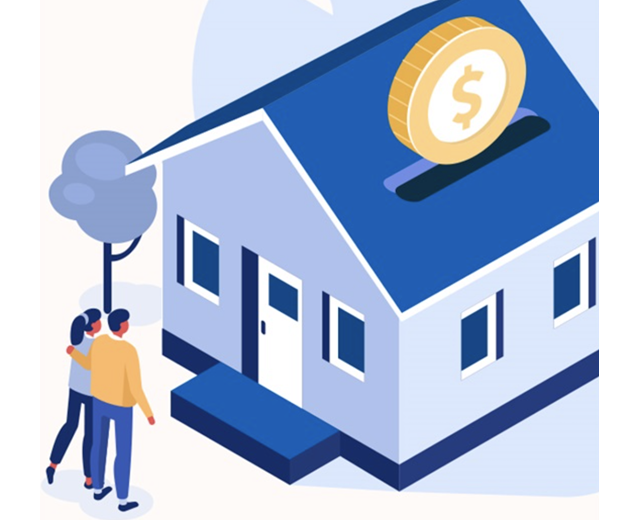A Complete Review of Conventional Mortgage Loans for First-Time Purchasers
A Complete Review of Conventional Mortgage Loans for First-Time Purchasers
Blog Article
The Essential Variables to Think About When Finding In Between Fixed-Rate and Variable-rate Mortgage Lendings
When assessing mortgage options, debtors face a critical choice between adjustable-rate and fixed-rate loans, each presenting unique benefits and potential risks. Trick factors to consider such as rates of interest security, predictability in regular monthly repayments, and the ramifications of prospective price changes can substantially affect long-lasting economic wellness. Comprehending the awaited duration of homeownership and the overall expense of borrowing can shape one's method. As these elements intertwine with private financial circumstances and run the risk of tolerance, the implications of this selection might not be as uncomplicated as they appear. What nuances should be focused on in this important decision-making process?
Interest Price Security
When picking a home mortgage, comprehending rates of interest stability is crucial for informed decision-making. Rate of interest can considerably influence the total price of a home mortgage, and recognizing the nature of these rates is crucial for debtors. Fixed-rate home mortgages offer the benefit of regular regular monthly repayments over the life of the funding, shielding consumers from market fluctuations. This stability enables home owners to intend their funds with better certainty, as they will certainly not be affected by increasing passion rates.
On the other hand, adjustable-rate home loans (ARMs) start with lower preliminary prices that may change occasionally based upon market conditions. While this can lead to lower repayments originally, it likewise presents unpredictability, as borrowers may encounter boosted repayments if rates of interest rise. For those taking into consideration an ARM, it is important to evaluate the likelihood of rate changes, the potential for repayment boosts, and the length of the first fixed-rate period.
Eventually, the choice between adjustable-rate and fixed-rate home loans pivots on specific risk resistance and financial situations. Comprehending rate of interest security assists consumers make notified decisions that align with their long-lasting monetary objectives.
Regular Monthly Settlement Predictability
While borrowers often prioritize rates of interest stability, the predictability of monthly settlements is equally essential in the home mortgage selection procedure (Conventional mortgage loans). Regular monthly settlement predictability plays an essential duty in budgeting and monetary planning, as it straight affects a house owner's cash money circulation and total monetary health and wellness
Fixed-rate mortgages provide a regular regular monthly settlement throughout the life of the financing, enabling borrowers to expect and prepare their expenses successfully. This stability can be specifically helpful for newbie homebuyers or those on a set income, as it gets rid of the unpredictability associated with changing repayments.
Alternatively, variable-rate mortgages (ARMs) normally include lower first repayments that can change with time, resulting in prospective irregularity in regular monthly commitments. While originally attractive, this unpredictability can complicate economic preparation, particularly if customers do not represent future rate changes.
Prospective Rate Changes
In the world of adjustable-rate home mortgages (ARMs), possible rate changes represent a considerable aspect that customers should thoroughly take into consideration. Unlike fixed-rate home loans, where the rate of interest continues to be unmodified for the life of the lending, ARMs are characterized by varying rate of interest that are tied to market indices. This variability can bring about significant modifications in month-to-month payments, influencing the debtor's economic preparation and budgeting.
Consumers have to be conscious of the margin and index utilized to calculate these modifications, as they directly influence future interest rates. Additionally, ARMs commonly consist of caps that limit just how much the rate of interest rate can raise at each modification and over the life of the lending, which can provide some level of protection against radical price walkings.
Understanding these prospective modifications is vital for consumers, as they directly affect lasting settlement commitments. Examining personal monetary situations and take the chance of resistance is essential when determining whether an ARM lines up with one's financial objectives.
Car Loan Term Considerations
Loan term factors to consider play a crucial function in the decision-making process for customers selecting between fixed-rate and adjustable-rate mortgages. The length of the loan term dramatically impacts regular monthly payments, rates of interest, and total financial planning. Fixed-rate home loans typically use regards to 15 to 30 years, providing security in month-to-month settlements and predictability a fantastic read in budgeting. This can be specifically appealing for customers that intend to remain in the very same home long-lasting and prefer the assurance of set repayments throughout the life of the lending.

Eventually, debtors should evaluate their individual scenarios, monetary goals, and market problems when evaluating the implications of car loan term choices within each home mortgage kind.

Overall Price of Borrowing
Fixed-rate home loans use foreseeable monthly repayments, as the passion rate continues read this article to be constant throughout the funding term. This predictability can lead to reduced total expenses, especially in a stable or declining rate of interest price setting.
Conversely, adjustable-rate home loans (ARMs) typically start with reduced preliminary rates, leading to lowered ahead of time costs. However, these rates can boost after an initial period, leading to potentially higher long-term expenses. Consumers must consider the regularity and extent of rate adjustments, as well as the overall funding duration, to precisely analyze the economic ramifications.
Additionally, the general cost of loaning encompasses not only rates of interest yet likewise charges and other associated prices, such as closing expenses and insurance (Conventional mortgage loans). When reviewing home mortgage choices, customers must carry out an extensive cost evaluation over the life of the funding. By doing so, they can make an educated decision that straightens with their financial objectives and run the risk of resistance
Conclusion
Rate of interest rate security and month-to-month settlement predictability are vital for reliable budgeting, while the capacity for price modifications in ARMs presents financial uncertainty. In addition, the anticipated period of homeownership and the overall cost of loaning, consisting of rate of interest prices and linked fees, have to line up with specific monetary conditions and take the chance of resistance.
Key considerations such as passion price stability, predictability in regular monthly payments, and the implications of possible price adjustments can significantly impact long-term financial health. Interest rates can significantly impact the overall expense of a home mortgage, and identifying the nature of these prices is crucial for consumers. Unlike fixed-rate home mortgages, where the interest rate continues to be unmodified for the life of the financing, ARMs are identified by rising and fall rate of interest rates that are tied to market indices. Additionally, ARMs usually consist of caps that restrict exactly how much the interest price can boost at each modification and over the life of the lending, which can give some level of security versus extreme price hikes.
Passion rate security and monthly settlement predictability are critical for efficient budgeting, while the potential for price modifications in ARMs introduces financial uncertainty.
Report this page